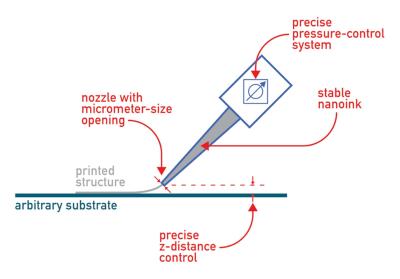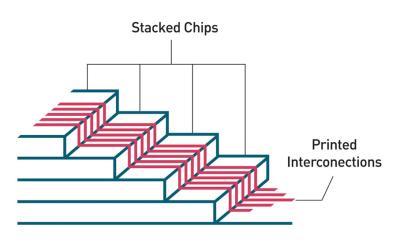This is a sponsored post by XTPL
Say hello to the future of electronics with Ultra-Precise Deposition (UPD) technology! This cutting-edge method allows us to create intricate, high-resolution electronic devices with greater flexibility and precision than ever before. UPD is set to revolutionize the world of additive manufacturing, offering a much-needed solution for printing conductive and insulating structures on complex substrates.
So, what is UPD, and why is it such a game-changer? It's a unique way of printing conductive and insulating materials onto various surfaces, both rigid and flexible. It helps fix defects in OLED displays and connects the tiny components in microLED arrays. The best part? It's versatile and adaptable to a wide range of applications, from flexible electronics to solar cells and MEMS devices.
The secret sauce of UPD lies in its ability to extrude highly-concentrated paste through a tiny nozzle onto the desired surface. The nozzle's position is controlled by a high-resolution vision system, and the process is pressure-governed, requiring precise pressure control. This results in a an accurate, and fast printing process that can achieve maximum speeds of 10 mm/s.
But it's not just about the technique – the materials used are vital too! The silver paste used in UPD is specifically designed to prevent agglomeration, sedimentation, and stability. Due to our specific formulations, inks based on silver nanoparticles avoid clogging the nozzle, ensuring consistent performance.
Figure 1 demonstrates the Ultra-Precise Deposition (UPD) approach. The sketch highlights the key feature of the technology, which is the ability to extrude high-viscosity paste (85% by weight of solid content) through a narrow printing nozzle (0.5 to 10 μm). The result of this process is a single-pass deposition of 1 to 10 μm feature size with an excellent aspect ratio. The sketch also shows that the achievement of such precise deposition is through the interplay between the paste properties, the process parameters, and the nozzle design. It is worth noting that UPD technology does not require an electric field.
UPD's versatility allows printing on various materials and junctions. Additionally, the technology allows for printing various materials, including conductive meshes and microdots using silver, copper, and gold nanopastes. These meshes have the potential to be used in displays and smart devices, surpassing the performance of traditional alternatives like indium tin oxide-based transparent conductive films.
In addition to its flexibility in materials and substrates, UPD technology can also print on surfaces with pre-existing features, including steps much higher than the line width. This opens up a whole new world of possibilities for designing and manufacturing advanced electronic devices.
Figure 2 demonstrates the possibilities for achieving high-density interconnections on stacked chips. With a resolution of less than 10 μm/10 μm L/S and prevention of satellite droplets and line width heterogeneity, this technology is ideal for avoiding electrical shorts. As such, this feature, is a promising solution for a range of industries, including semiconductors, microelectronics, FPD, MEMS, and flexible hybrid electronics.
Another benefit of UPD is its ability to withstand extreme conditions. For instance, printed structures on glass can endure temperatures as high as 350 °C during thermal sintering, while those on PET and PEN foils can withstand maximum temperatures of 120 °C and 269 °C, respectively. Furthermore, printed conductive structures can be protected from humidity by coatings and encapsulation. The coating itself can be printed using the UPD technology as well. This makes UPD a robust solution for various applications. Finally, UPD can be used to print multiple layers of conductive and insulating materials, paving the way for all-printed electronic devices.
In conclusion, UPD technology is an exciting development in the world of electronics, promising to revolutionize the way we create and manufacture a wide range of devices. Its versatility, precision, and adaptability make it an essential tool for the future of flexible and printed electronics, positioning it as an indispensable element of modern production lines. With UPD, we are one step closer to a world where innovative electronic devices are accessible to everyone.
For more information contact us at sales@xtpl.com or visit our website www.xtpl.com



